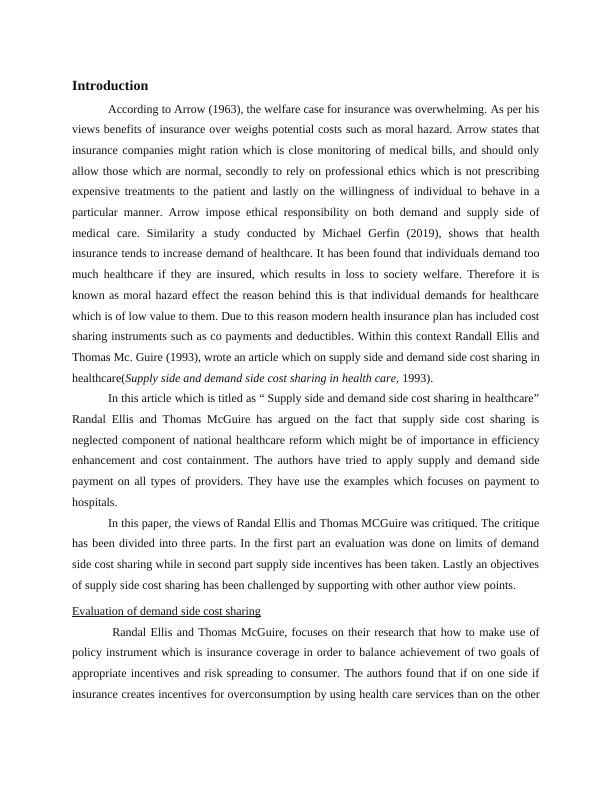increase demand of healthcare Assignment
Added on 2021-02-19
7 Pages1919 Words88 Views
Assessment

Table of ContentsIntroduction .....................................................................................................................................3Evaluation of demand side cost sharing.................................................................................3Various objectives for supply side cost sharing :...................................................................5CONCLUSION................................................................................................................................6REFERENCES................................................................................................................................7

Introduction According to Arrow (1963), the welfare case for insurance was overwhelming. As per hisviews benefits of insurance over weighs potential costs such as moral hazard. Arrow states thatinsurance companies might ration which is close monitoring of medical bills, and should onlyallow those which are normal, secondly to rely on professional ethics which is not prescribingexpensive treatments to the patient and lastly on the willingness of individual to behave in aparticular manner. Arrow impose ethical responsibility on both demand and supply side ofmedical care. Similarity a study conducted by Michael Gerfin (2019), shows that healthinsurance tends to increase demand of healthcare. It has been found that individuals demand toomuch healthcare if they are insured, which results in loss to society welfare. Therefore it isknown as moral hazard effect the reason behind this is that individual demands for healthcarewhich is of low value to them. Due to this reason modern health insurance plan has included costsharing instruments such as co payments and deductibles. Within this context Randall Ellis andThomas Mc. Guire (1993), wrote an article which on supply side and demand side cost sharing inhealthcare(Supply side and demand side cost sharing in health care, 1993). In this article which is titled as “ Supply side and demand side cost sharing in healthcare”Randal Ellis and Thomas McGuire has argued on the fact that supply side cost sharing isneglected component of national healthcare reform which might be of importance in efficiencyenhancement and cost containment. The authors have tried to apply supply and demand sidepayment on all types of providers. They have use the examples which focuses on payment tohospitals. In this paper, the views of Randal Ellis and Thomas MCGuire was critiqued. The critiquehas been divided into three parts. In the first part an evaluation was done on limits of demandside cost sharing while in second part supply side incentives has been taken. Lastly an objectivesof supply side cost sharing has been challenged by supporting with other author view points. Evaluation of demand side cost sharing Randal Ellis and Thomas McGuire, focuses on their research that how to make use ofpolicy instrument which is insurance coverage in order to balance achievement of two goals ofappropriate incentives and risk spreading to consumer. The authors found that if on one side ifinsurance creates incentives for overconsumption by using health care services than on the other

End of preview
Want to access all the pages? Upload your documents or become a member.
Related Documents
Health Economics and Financelg...
|9
|1753
|459
Supply-Side and Demand Side Cost Sharing In Healthcare Article 2022lg...
|7
|1846
|23
